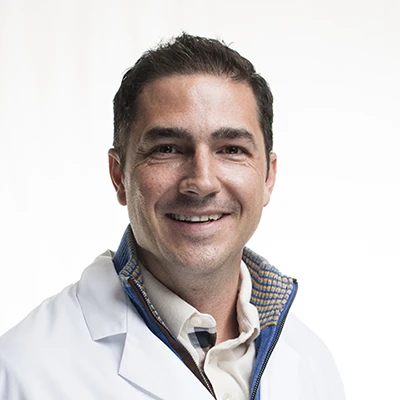Q: How did you become so passionate about ultrasound?
Dr. Butler: Like many physicians who trained before the 2010s, I didn't see much value in ultrasound. Then, a few years ago, I saw a patient in the emergency department who’d experienced a somewhat mysterious episode of sudden cardiac arrest.
I had a fellow with me and thought maybe I’d do an ultrasound — just to show that younger doc I wasn’t a dinosaur who couldn’t work the machine. To my surprise, POCUS uncovered a completely different diagnosis than I’d expected. We treated the patient and saved her life.
I was impressed. As I started doing more scans, I uncovered even more unexpected issues. I also noticed more cases where ultrasound wasn’t being used to its full potential.
Q: How did this translate into the POCUS initiative?
Dr. Butler: This solvable gap between technology and practice made me passionate about driving change. At Vituity, there is a culture that encourages us as physician owners to be change leaders when we identify gaps in care. It was then that I made it my mission to integrate POCUS into regular emergency medicine practice and share it through the Vituity collaboratives program.
Q: How did you change clinical practice?
Dr. Butler: I started by gathering data. Specifically, I surveyed all the practice sites that were using POCUS — about 20 at the time. How were they doing it? How did they save the pictures? How did they move the scanner? What were the best practices?
I compiled the results into a report, which I shared with leadership as well as the participating teams. That was huge for creating interest and buy-in at all levels of the partnership. I also wrote an eBook on sultrasound best practices, which we still update annually.
A group of about eight emergency medicine sites started meeting monthly to share POCUS data and best practices. That’s when we realized that these departments had significantly faster throughput than the partnership as a whole. This trend continued even as our group grew to 20 sites and then to 40.
Q: How successful has the ultrasound initiative been?
Dr. Butler: We've tripled our POCUS utilization over the last couple years, with most participating teams seeing a significant increase in their ultrasound utilization. In fact, a 50 to 100% increase in the number of scans is typical.
But we still have work to do. The trouble with medicine is that there are always so many distractions competing for your attention. We have the data to prove that ultrasound can make emergency teams less busy, by streamlining care and allowing for more rapid and informed decision-making.
Now, it’s just a matter of education.
Q: I understand there have been some changes to the POCUS collaborative.
Dr. Butler: The annual collaborative still brings together about ten site leadership teams, which can include clinical, nursing, and hospital leadership. However, we've changed the format to make it more focused.
Participants now meet for a five-hour bootcamp where they learn strategies and best practices to increase POCUS utilization. And then they go right into implementation and weekly coaching calls, which last six to eight months.
Q: What does the future hold for POCUS?
Dr. Butler: Traditionally, the POCUS initiative has focused on emergency medicine. But we’ve recently started including hospital medicine in the collaborative, which really is the next frontier. Every night a patient spends in the hospital is a night of bad sleep with potential for complications and medical errors. If we can get patients home a day earlier, that really is better, safer care.






















